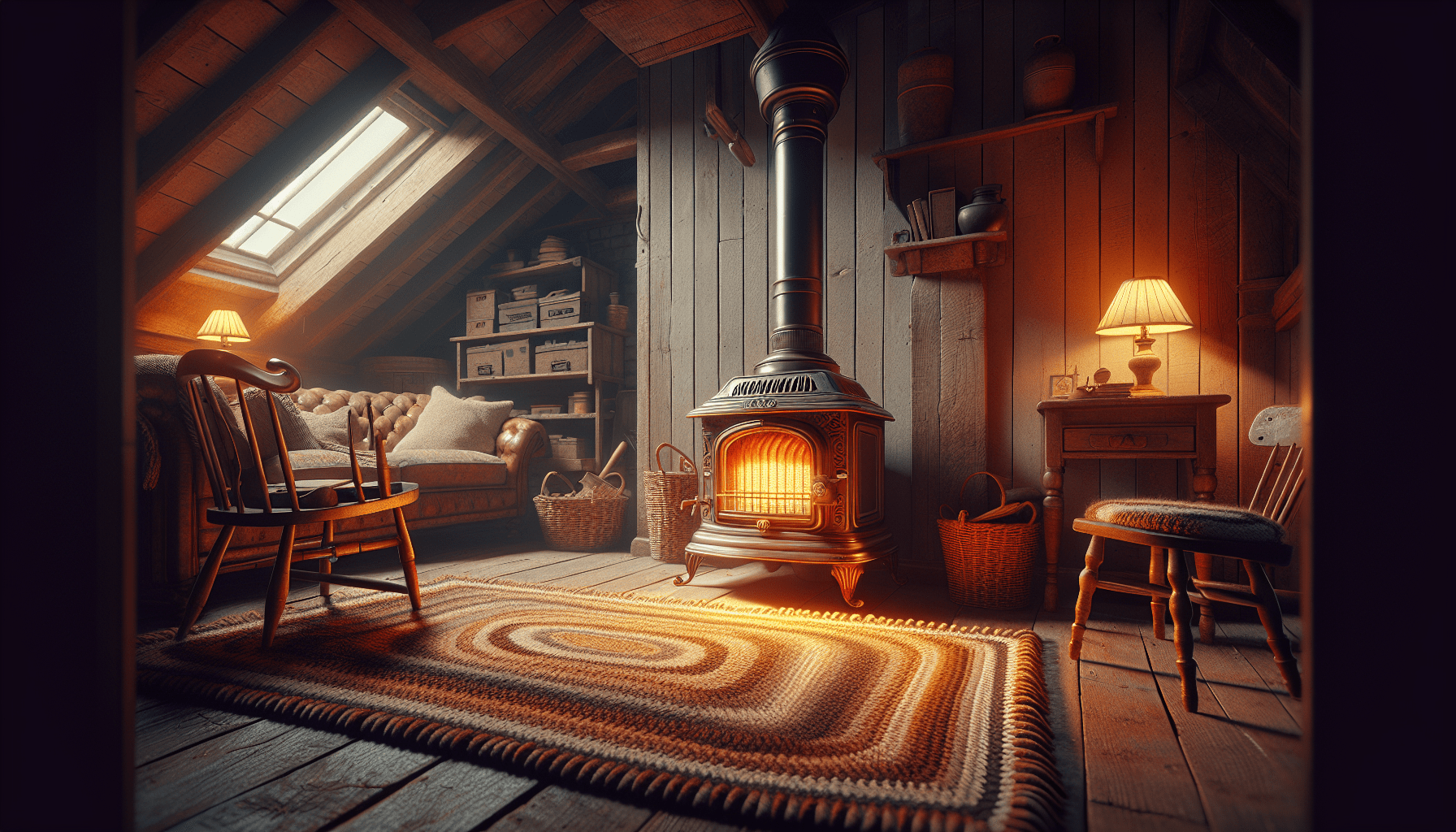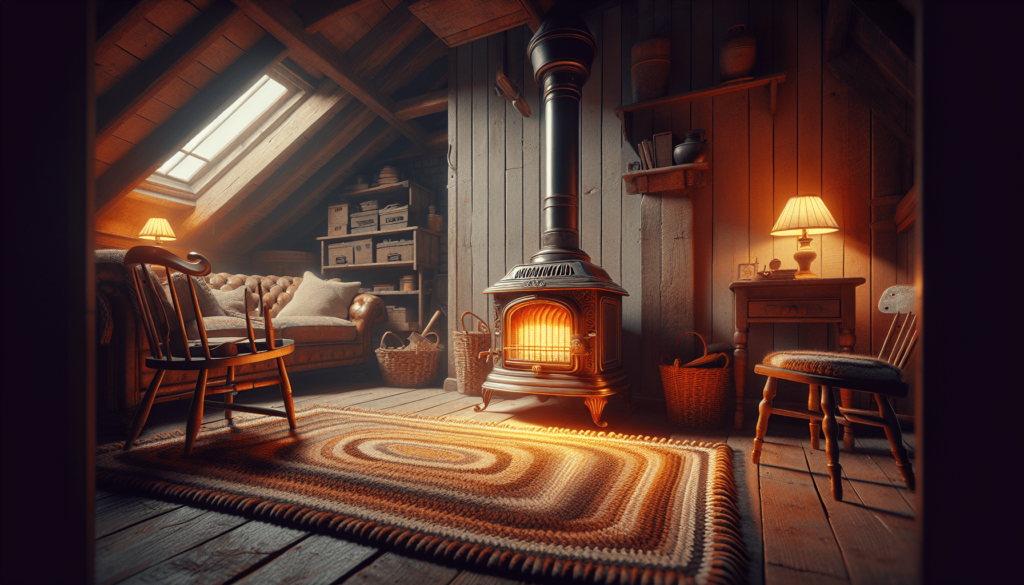
Have you ever wondered how chimney vented oil heaters work and why they might be a suitable choice for warming your home? You’re not alone. Many people are looking to understand this traditional yet reliable method of heating. Understanding the intricacies of chimney vented oil heaters can help you make an informed decision about your heating needs.

What is a Chimney Vented Oil Heater?
A chimney vented oil heater is a type of heating system that uses oil as a fuel source and relies on a chimney to vent the byproducts of combustion out of your home. The concept may seem a bit old-fashioned, but in reality, it provides an efficient and reliable heat source.
These heaters convert oil into heat by burning it in a combustion chamber. The heat produced transfers to the air, warming your home. Meanwhile, the exhaust gases produced during combustion are expelled through the chimney, keeping your living space safe and comfortable.
How Does It Work?
The process begins with the ignition of oil in the burner, creating heat. This heat is transferred to the surrounding air either directly or through a heat exchanger. The efficiency of this heat transfer determines how effectively the heater warms your space. The combustion byproducts, including gases like carbon dioxide, are then vented through the chimney.
Here’s a simplified breakdown:
| Step | Process |
|---|---|
| 1 | Oil ignites in the burner |
| 2 | Heat is produced |
| 3 | Heat is transferred to air or through a heat exchanger |
| 4 | Combustion byproducts are expelled via the chimney |
Understanding these steps can give you a clearer picture of how this heating method operates, providing warmth and safety in your home.
Benefits of Chimney Vented Oil Heaters
You might be asking yourself why you should consider a chimney vented oil heater over other heating options. The benefits are multifaceted and cater to a variety of needs and preferences.
Efficiency and Cost-Effectiveness
Oil heaters are known for their high efficiency. The ability to convert a large portion of fuel into heat makes them a viable option for reducing fuel costs in the long run. While the initial setup may require a financial outlay, the operational costs can be quite competitive, especially in colder climates where heating is required for extended periods.
Reliability
When it comes to reliability, chimney vented oil heaters are impressive. Once set up correctly, they can function consistently irrespective of external temperatures. Unlike some other heating options, they aren’t as susceptible to failure during extreme weather conditions, ensuring you stay warm when you need it most.
Safety
Safety is paramount in any home heating system. Chimney vented oil heaters are designed to manage and expel combustion byproducts efficiently, which reduces the risk of indoor air pollution. Modern systems come equipped with safety features such as automatic shut-offs and detectors for carbon monoxide and other gases, ensuring peace of mind.

Components of a Chimney Vented Oil Heater
A deep understanding of chimney vented oil heaters requires knowledge of their individual components. Each part plays a significant role in the heater’s overall function.
Burner
The burner is the heart of the oil heater. It is responsible for mixing oil with air to produce a flame. A well-functioning burner ensures efficient combustion, which is essential for both performance and safety.
Heat Exchanger
The heat exchanger transfers heat from the combustion gases to the air that will be circulated through your home. A high-efficiency heat exchanger ensures maximum warmth while using the least amount of oil possible.
Combustion Chamber
This is where the burning of oil takes place. The design of the combustion chamber is critical for ensuring complete combustion, minimizing the production of hazardous exhaust gases.
Chimney
The chimney is essential for venting the byproducts of combustion, including water vapor and carbon dioxide, out of your home. A properly functioning chimney is key to maintaining indoor air quality.
Thermostat
The thermostat regulates the temperature by controlling the burner. It ensures that your home remains at the desired temperature without wasting fuel, enhancing both comfort and efficiency.
Safety Features
Modern chimney vented oil heaters come with a range of safety features. These may include automatic shut-off mechanisms, carbon monoxide detectors, and pressure relief valves. These features are designed to prevent accidents and ensure safe operation.
Installation and Setup
The process of installing a chimney vented oil heater requires careful planning and professional expertise. Here’s what you need to know.
Site Selection
Choosing the right location for your heater is crucial. It should be placed in an area that allows for efficient heat distribution and easy access for maintenance. The proximity to the chimney is also a key factor.
Chimney Considerations
The chimney must be properly constructed and maintained to ensure effective venting of exhaust gases. Considerations include the height, diameter, and overall condition of the chimney. An inspection by a professional can help determine any necessary adjustments or repairs.
Professional Installation
While some aspects of installation might seem manageable, a professional installation ensures safety and efficiency. Professionals can handle the technical aspects like connecting the oil line, setting up the combustion chamber, and calibrating the thermostat.
Maintenance Tips
Regular maintenance of your chimney vented oil heater can extend its lifespan and enhance performance. Here are some tips to keep your system running smoothly.
Annual Servicing
Have your heater serviced annually by a qualified technician. This includes cleaning the burner, inspecting the heat exchanger, and checking the chimney for blockages or damage.
Filter Replacement
Replace the oil filter regularly, typically once a year. A clean filter ensures that the oil flows smoothly to the burner, enhancing combustion efficiency.
Monitoring Oil Levels
Keep an eye on your oil levels, especially during the colder months. Running out of oil can not only leave you without heat but can also damage the system.
Chimney Inspection
Regularly inspect your chimney for blockages, creosote buildup, or structural damage. A clean and functional chimney is essential for safe operation.
Safety Checks
Test your smoke and carbon monoxide detectors periodically to ensure they’re in working order. Replace batteries as needed and keep spare detectors on hand.
Common Issues and Troubleshooting
Despite their reliability, chimney vented oil heaters can encounter issues. Knowing how to troubleshoot common problems can save you time and stress.
Unlit Burner
If your burner isn’t lighting, check the oil supply and the ignition system. If these are functioning correctly, the issue might lie with the burner itself, which may need professional attention.
Insufficient Heat
If your heater isn’t producing enough heat, the problem could be related to the thermostat, the heat exchanger, or the burner settings. Cleaning the components and ensuring your thermostat is set correctly can often resolve this issue.
Smoke or Odors
If you notice smoke or unusual odors, turn off your heater immediately and check for chimney blockages or oil leaks. These symptoms indicate incomplete combustion, which can be hazardous.
Noise
Unusual noises, such as banging or whistling, can indicate a problem with the burner or the fan. Inspect these components and consult a professional if the issue persists.
Environmental Considerations
While chimney vented oil heaters offer many benefits, they also come with environmental considerations. The use of oil as a fuel source has implications for both local air quality and global climate change.
Emissions
Oil combustion produces emissions that can impact air quality. However, modern oil heaters are designed to minimize these emissions through efficient combustion processes and advanced technology.
Oil Supply
The sourcing and transportation of heating oil have environmental impacts. Consider purchasing from suppliers who prioritize environmentally responsible practices.
Alternative Options
If you’re concerned about the environmental impact of oil heating, consider integrating renewable energy sources, such as solar panels, to supplement your heating needs. This can reduce your reliance on oil and lower your overall environmental footprint.
Conclusion
Understanding chimney vented oil heaters can empower you to make informed choices about your home heating. From their operation and components to installation, maintenance, and troubleshooting, this detailed guide has covered the essential aspects you need to know. By focusing on efficiency, safety, and environmental considerations, you can ensure that your heating system meets your needs while being mindful of the broader impact.
Feel free to share and discuss this information with others who might benefit from a deeper understanding of this reliable heating option.
